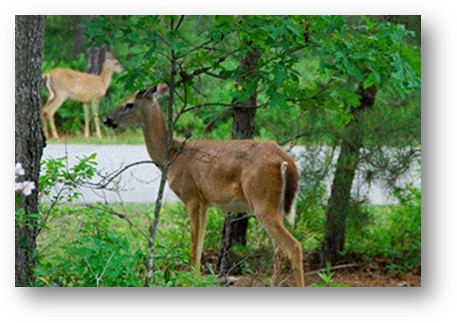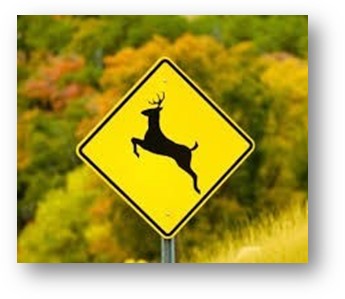
This article was first published by the New Jersey Department of Environmental Protection and is republished here with permission.
NEW JERSEY—Drivers are urged to use extra caution and watch for white-tailed deer as deer mating season gets under way and darkness arrives earlier, the New Jersey Department of Environmental Protection’s Division of Fish and Wildlife announced Oct. 23.
White-tailed deer become more active during mating season, also known as the fall rut. Deer are more likely apt to suddenly run onto roadways during this time of year as bucks pursue does, risking the possibility of colliding with a vehicle.
Increased deer activity is more likely to occur in the very early morning and around sunset, when visibility may be difficult.
“Deer are involved in thousands of collisions with motor vehicles in New Jersey each year, with the highest number occurring during the fall mating season,” Division of Fish and Wildlife Director Dave Golden said. “We urge all motorists to be especially alert to the possibility of deer suddenly darting onto roadways and to be aware of things they can do to reduce the risk of a collision and possible serious injury to themselves or their passengers.”
Being extra vigilant for deer will become even more important when daylight saving time ends at 2 a.m. on Sunday, Nov. 3. Most commutes will then align with the periods when deer are most active, and lighting conditions may be the most difficult for driving.
Reduced lighting and sun glare can make it very difficult for drivers to see deer that are about to cross the road. In addition, multiple deer may cross the road at any moment, usually in single file.
Peak mating season for deer in New Jersey runs from late October throughout November and into mid-December in all areas of the state.

These tips can help drivers stay safe during the fall rut:
• If you see a deer, slow down and watch for possible sudden movement. If the deer is in the road and doesn’t move, wait for the deer to pass and only proceed the road is clear. Do not try to maneuver around the deer.
• Pay attention to “Deer Crossing” signs. Slow down when traveling through areas known to have a high concentration of deer so you have enough time to stop, if necessary.
• When traveling after dark, use high beams if there is no oncoming traffic or vehicles ahead. High beams will be reflected by the eyes of deer on or near roads. If you see one deer, assume that others may be in the area.
• Don’t tailgate. The driver in front of you might have to stop suddenly to avoid hitting a deer.
• Always wear a seatbelt, as required by law. Drive at a safe and sensible speed, factoring for weather, available lighting, traffic, curves and other road conditions.
• If a collision appears inevitable, do not swerve to avoid impact. The deer may counter-maneuver suddenly. Brake appropriately and stay in your lane. Collisions are more likely to become fatal when a driver swerves to avoid a deer and instead collides with oncoming traffic or a fixed structure along the road.
• Report any deer–vehicle collision to a local law enforcement agency immediately.
• Obey the state’s hands-free device law or refrain from using cellular devices while driving.
To report a deer carcass on an interstate or state highway, call 1-800-POTHOLE (1-800-768-4653) or go the New Jersey Department of Transportation’s website and fill out an online form. Report deer carcasses on Bergen County roads by calling (201) 646-2808.
